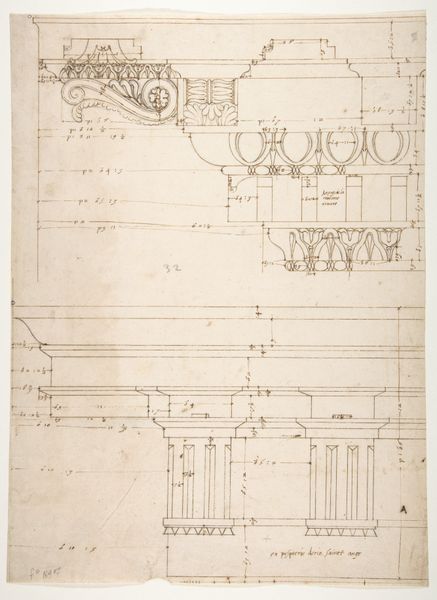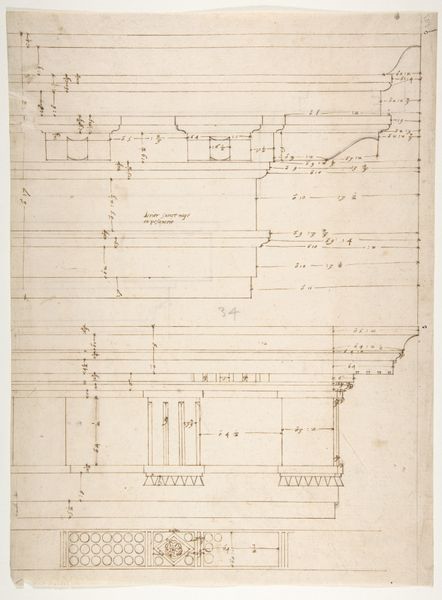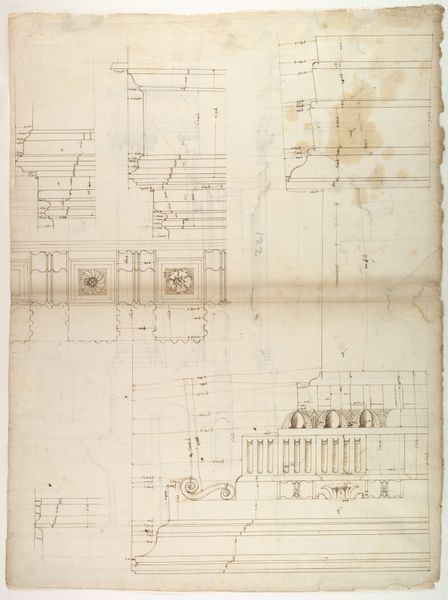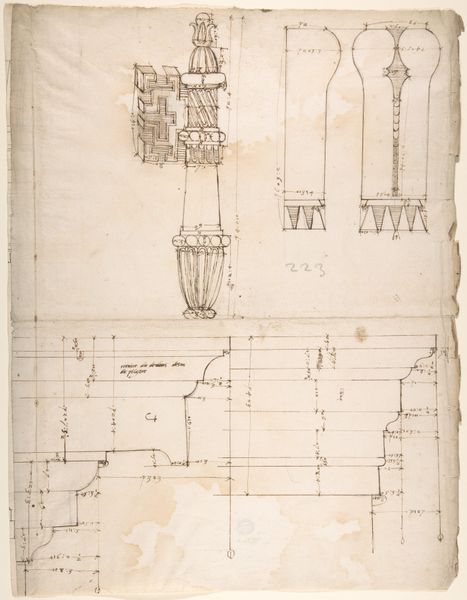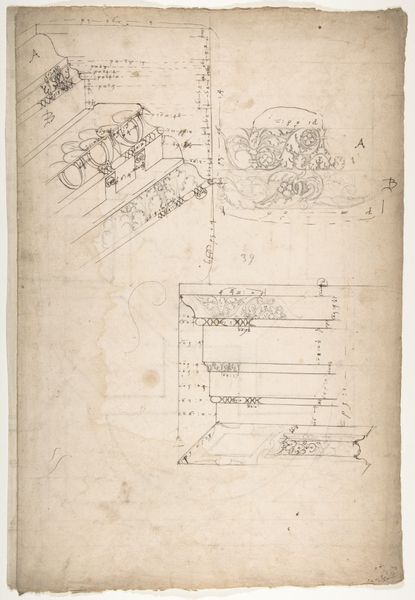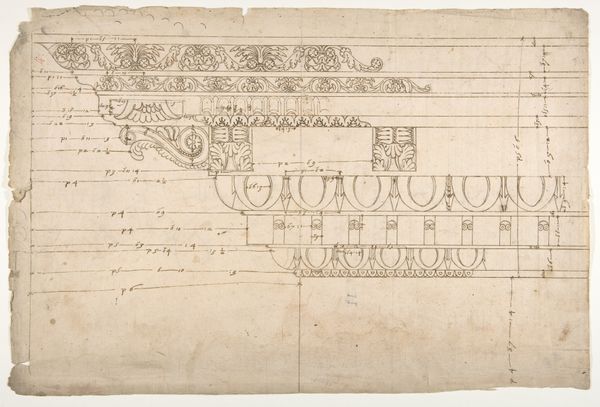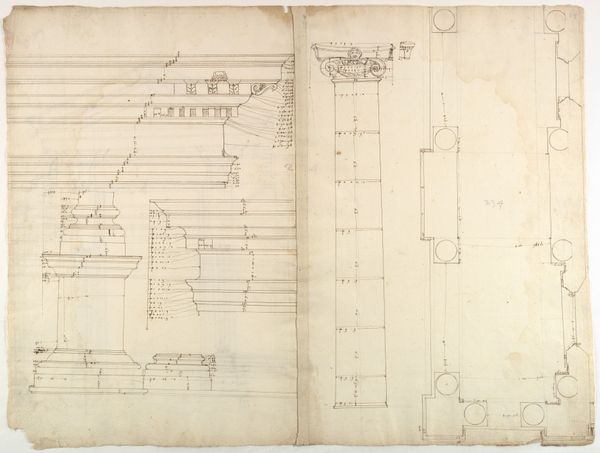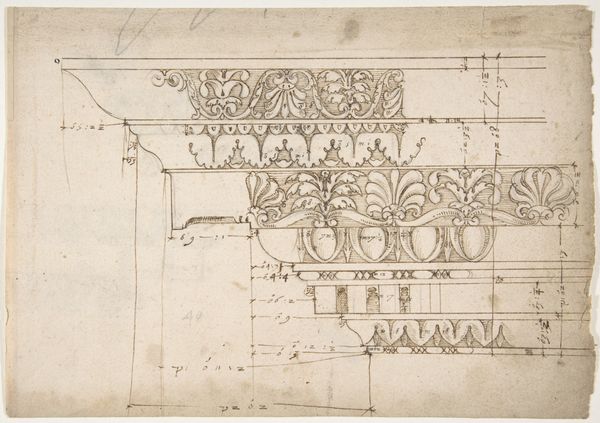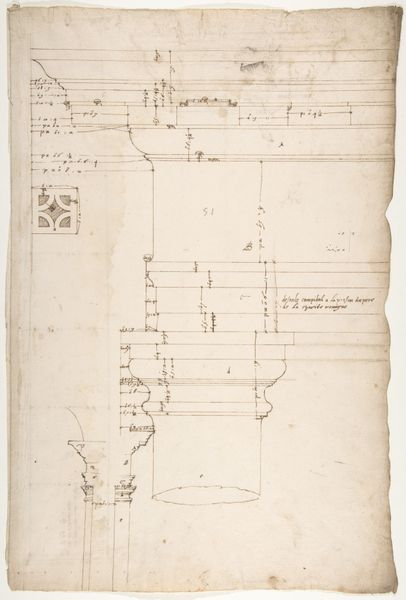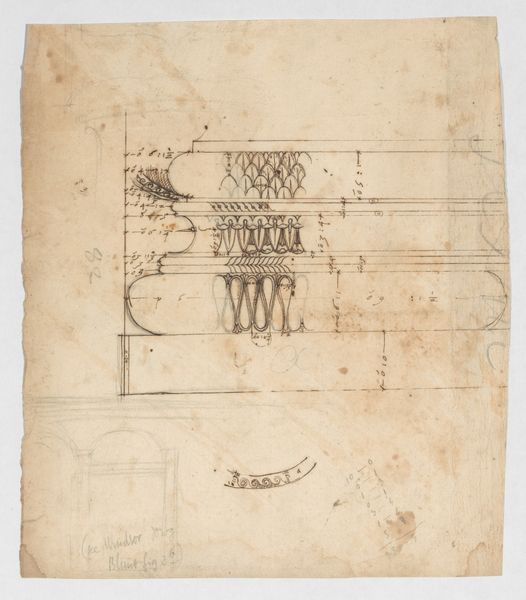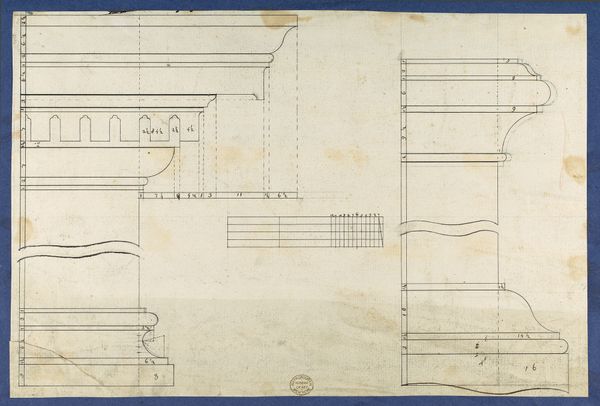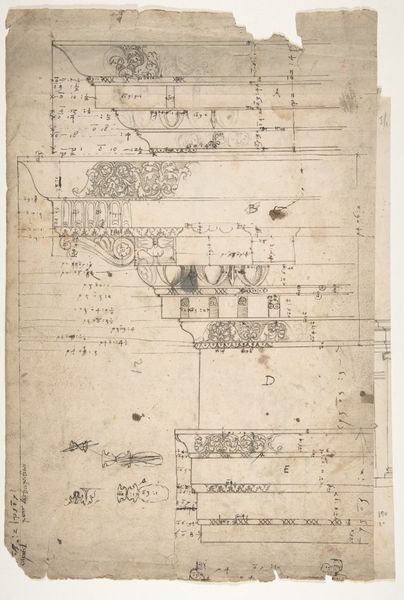
Unidentified, Composite base, elevation; Unidentified, Composite base, elevation; Unidentified, Composite base, elevation (recto) blank (verso) 1500 - 1560
0:00
0:00
drawing, paper, ink, architecture
#
drawing
#
paper
#
form
#
ink
#
geometric
#
line
#
italian-renaissance
#
architecture
Dimensions: sheet: 17 1/8 x 11 3/16 in. (43.5 x 28.4 cm)
Copyright: Public Domain
Editor: Here we have an architectural drawing from the Italian Renaissance, dating from 1500 to 1560. It's pen and ink on paper, and the museum calls it "Unidentified, Composite base, elevation". The precision is really striking. What do you notice first when you look at this piece? Curator: I see the remnants of a very particular kind of power structure being carefully articulated. Architectural drawings like this weren’t just technical exercises; they were statements of intent, shaping the physical world and thus reinforcing social hierarchies. Who gets to decide what 'beauty' looks like, and who then gets to inhabit it? Those choices weren't—and still aren’t—neutral. Editor: So, you see this as more than just a design? Curator: Absolutely. The composite base itself, a merging of different orders, hints at a desire to synthesize and control diverse aesthetic influences, mirroring how Renaissance society was attempting to synthesize classical knowledge with Christian theology, often suppressing or co-opting other cultural perspectives in the process. What narratives were intentionally excluded from these carefully constructed spaces? Who was denied access, visually and physically? Editor: That's fascinating. It reframes how I see the drawing, making me think about whose voices are missing. I was initially focused on the elegance, but now I am more aware of its implicit social commentary. Curator: Exactly! And by recognizing these historical dynamics, we can better question how architecture, even today, continues to shape our understanding of power, access, and belonging. Editor: I see what you mean. Looking at this drawing isn’t just about appreciating Renaissance artistry, it's also about interrogating the social implications embedded within it. Thanks for this insightful perspective!
Comments
No comments
Be the first to comment and join the conversation on the ultimate creative platform.
